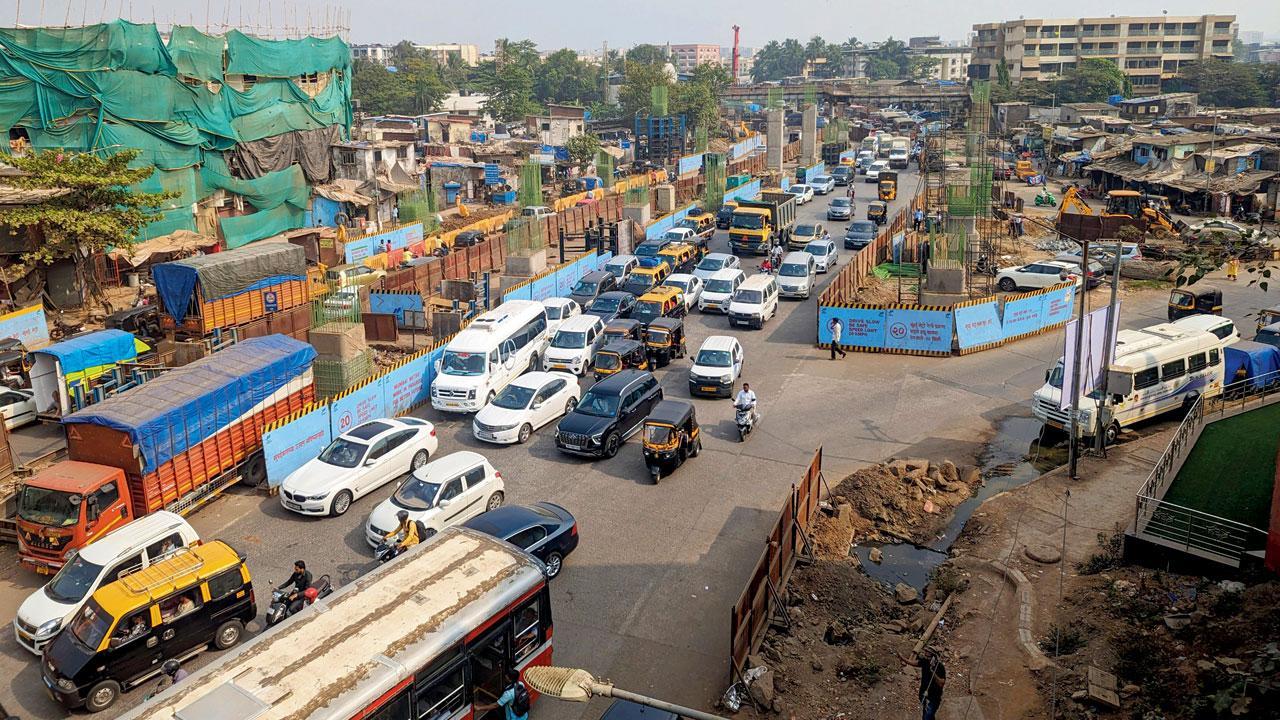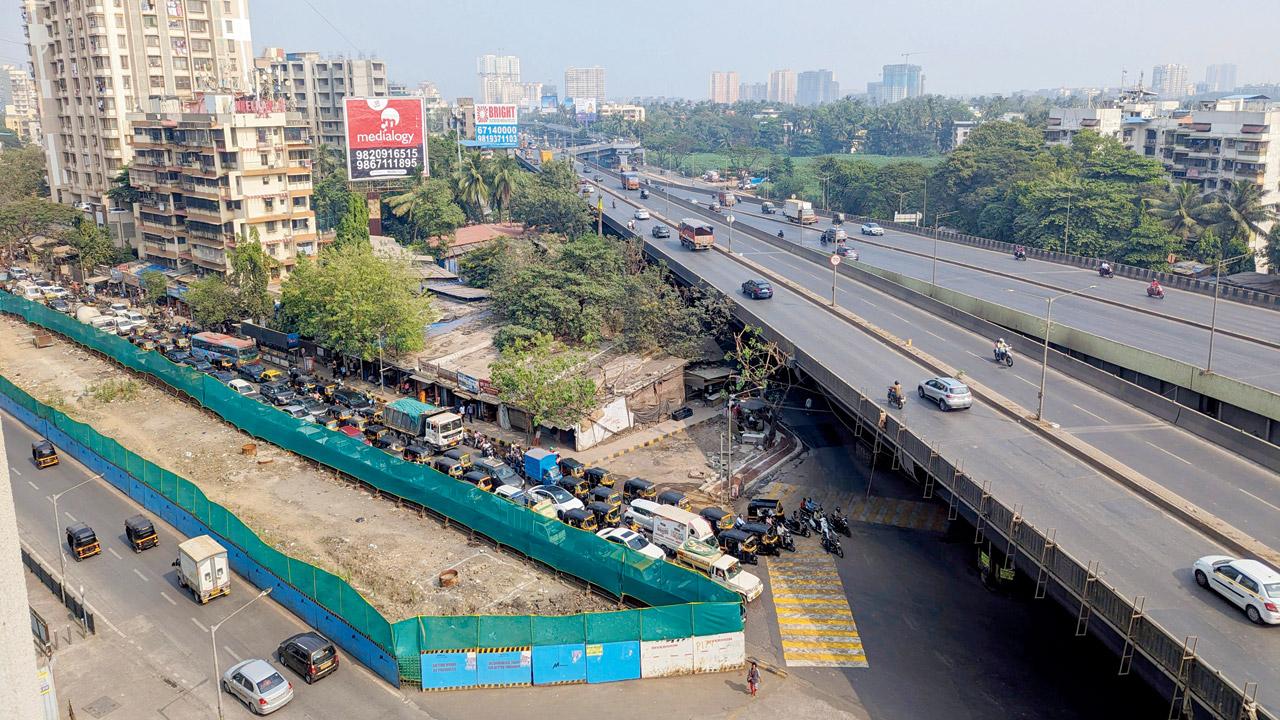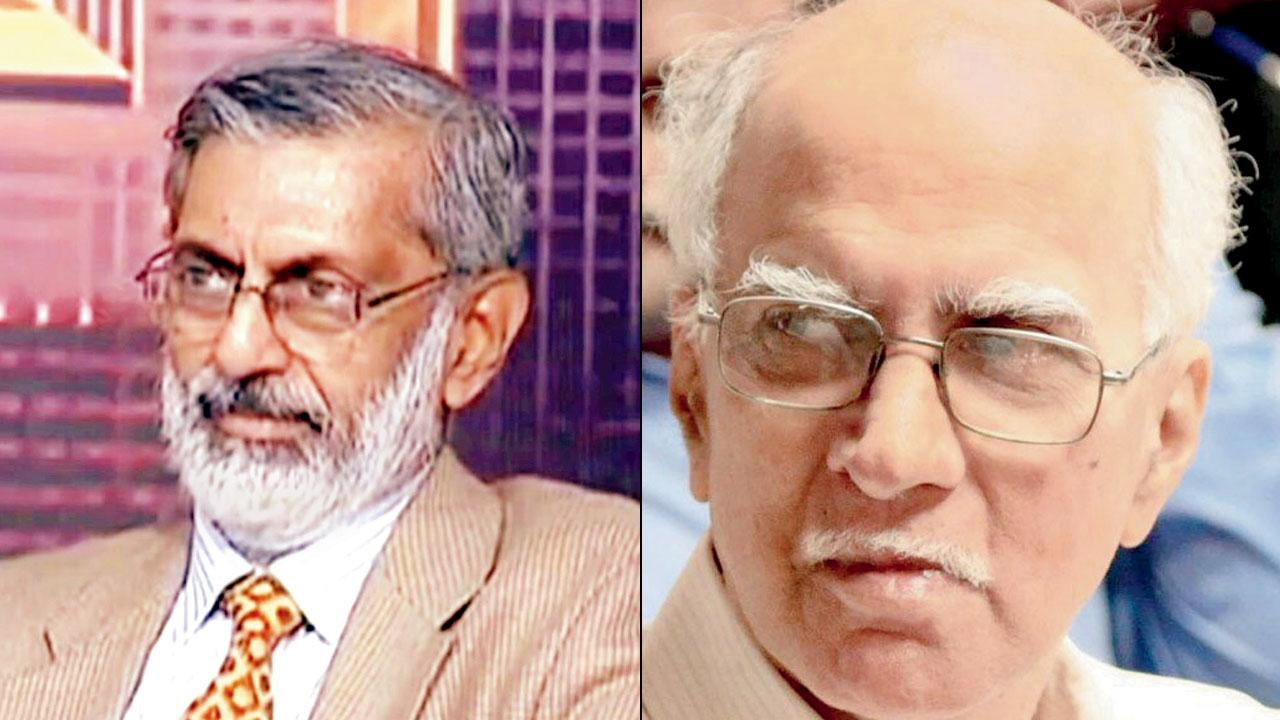mid-day takes a look at what one might ironically call a comedy of errors, except that we don’t hear anyone laughing

The Santacruz Chembur Link Road (SCLR) has ended up restricting access to a key station like Kurla, and this is just one instance of the poor planning when it comes to roads and infrastructure
The upcoming Metro Green Line 4, they tell us, will let you go to Thane from Ghatkopar with tremendous ease. Except that the closest metro station is about two km away from the local railway station in the west and nearly one km away in the east near Pant Nagar. Further, the 32.32 km line has no interchanges with the busiest stations of Ghatkopar and Chembur, the existing Ghatkopar-Versova Blue Line 1 or even the Mumbai Monorail. More? The other key line, Yellow Line 2B, has no interchange with the busiest suburban station of Kurla or even the Lokmanya Tilak Terminus.
ADVERTISEMENT
We can only infer that whoever drew up and endorsed the plans of the existing Mumbai Metro network was not aware of the city’s commuting dynamics and the most important spots in this pattern. As the colourful lines drawn on the maps change into reality on the ground, unforeseen challenges lead to outcomes like the recent dropping of the Suman Nagar and Amar Mahal stations from the Metro Line 4.

As the colourful lines drawn on the maps change into reality on the ground, unforeseen challenges lead to outcomes like the recent dropping of the Amar Mahal station, which was to come up here, from the Metro Line 4
A V Shenoy, a senior transport expert with Mumbai Mobility Forum & Mumbai Vikas Samiti, says, “I feel that the original routes of Metro 2B and Metro 3 were decided earlier by the consultants based on plans available that time. Those should have been reviewed to take care of changed situation on ground before starting the work. Dropping stations abruptly at this stage shows total failure of planning.”
According to an analysis by Sudhir Badami, a civil engineer from IIT-Bombay with 40 years of professional experience, the planned 487 km of Metro Rail network, when fully commissioned 17 years from today and assuming eight-coach rakes operating at three minute frequency, would meet barely 80 per cent of today’s needed capacity.
“I have proposed a scheme which, if implemented as conceived, will attract 60 to 65 per cent of personal car users to the Premium Public Transport System, improve peak hour speed of road traffic to 30 kmph from the current measly 10 kmph, charge personal car users for using and congesting a decongested road, provide high capacity of road public transport through provision of Normal BRTS squeezed in between the Premium BRTS on the same routes and provide high frequency microbus stage carrier service that will cater to the needs of the elderly, pregnant women and persons with disabilities,” he tells mid-day.

Sudhir Badami and A V Shenoy
MMRDA officials were unavailable for specific comments but said the agency has been working with the government in accordance with the rise and fall in demands of city’s commuting patterns and changing topography of the region. The cancelling of the two stations, though, are only the most recent examples in a city already reeling under the effects of impulsively planned projects.
Stagnant Skywalks: Skywalks were conceived in 2007 for pedestrians to quickly enter and exit some of the most crowded railway stations, as the presence of hawkers and parked vehicles made access difficult. The MMRDA planned to build 50 skywalks in the first phase and the first one was completed in June 2008 from the Bandra station to the Kalanagar Junction, measuring 1.3 km. The first skywalk with a hawkers’ plaza was built at Kanjurmarg in 2009, which remains unused by hawkers even for one day since its construction. A total of 24 skywalks were built in the MMR region, which were all handed over to the Brihanmumbai Municipal Corporation in 2014.
Today, many of the skywalks have been declared defunct or dangerous in structural audits, many others are encroached upon and inhabited by slum dwellers.
Mysterious Monorail: Planned in two phases, the first phase opened in 2014 from Chembur to Pratiksha Nagar in Sion and the second in 2019 till Jacob Circle. The Pratiksha Nagar station was later renamed as Wadala, creating confusion among commuters. Though there has been a rise in commuters recently, the line continues to sustain losses. It still operates with no connectivity with existing suburban railway at either end. It ends abruptly on Ramkrishna Chemburkar Road, 1 km away from Chembur suburban station and the recent skipping of Amar Mahal junction station has not helped. At the other end, it abruptly ends outside the Arthur Road Jail, not exactly close to the Mahalaxmi railway.
Things are looking up in a limited way, but in a limited way. More services have recently been introduced, and the only hope is now to get additional rakes and increased frequency. A recent proposal to waive off electricity duty on Monorail along with the Metros might be of some more help.
Blundering BKC: Planned in the 1970s, the MMRDA’s “growth centre” was visualised as a business hub, with multi-crore rupee businesses setting up their offices here. There was even a plan to set up a suburban railway line to connect Bandra and Kurla
Circa 2023, the focus seems to have only been on cramming as many buildings in the area. It is a struggle to reach BKC either from Bandra or from Kurla, and both these stations have a footfall of nearly five lakh commuters every day. The only solace is the1.6 km long Chunabhatti-BKC connector which has been helpful to bring it in the mainstream.
Mornings and evenings are riddled with chaos, with officegoers waiting for app-based buses, autos or private vehicles. The Yellow Line 2B and Aqua Line 3 pass through it but are still under various stages of construction.
Chaotic Kurla: Since the construction of Santacruz Chembur Link Road (SCLR), access for vehicles to a key station like Kurla has been restricted, and vehicles need to take a detour from under the SCLR and go via the LTT to get to the station. If you’re coming from Kalina and BKC, all arms of the SCLR pass under the Halav bridge in Kurla west and proceed to LTT, Chembur and the Eastern Express Highway. Any traffic obstruction would create nightmarish queues in all directions.
At present, an SG Barve Marg Station for the Yellow Line 2B is being constructed and the state government has assured the road will be opened up once the work is over, but all of it will definitely lead to additional traffic signals, resulting in an interruption in the free flowing traffic, defeating the purpose of the multi-crore rupee signal free road designed to ease congestion in the first place.
Numbing Names: Mumbai Metro network interchanges have different station names for the same spot, a practice which is not followed anywhere in the world. Metro Red Line 7’s Gundavli station is Metro Blue Line’s WEH (Western Express Highway Station). Metro Yellow Line 2A’s Andheri west station is Metro Blue Line’s DN Nagar station.
Despite being one big premise connected with a walkway, it is called the Western Express Highway station on Blue Line 1 (Versova-Ghatkopar line) and Gundavali station on the Red Line 7 (Dahisar-Andheri west). Similarly, the DN Nagar station on Blue Line 1 is called Andheri east station on Yellow Line 2A (Dahisar-Andheri east).
 Subscribe today by clicking the link and stay updated with the latest news!" Click here!
Subscribe today by clicking the link and stay updated with the latest news!" Click here!







